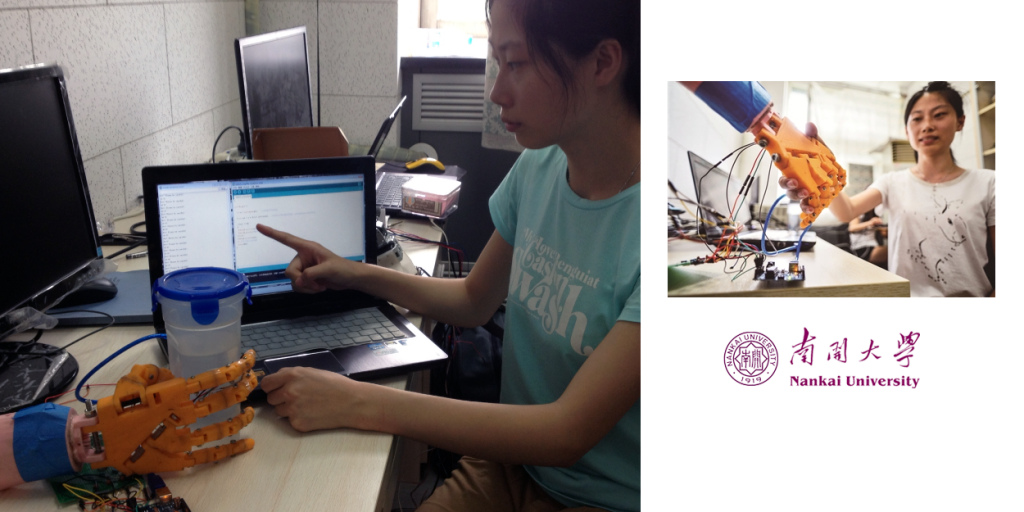
Led by Lü Siyi, a Computer & Control Engineering Student at the University, researchers were able to design and 3D print a prosthetic hand which is equipped with temperature sensors and rigged up to a micro-servo controller. The bionic hand, which can move based on muscle control, also has the ability to send feedback to its wearer. When the hand grasps an object which is determined to be “too hot”, the micro-controller tells it to ungrasp the object. At the same time, electrical impulses are sent back through the hand and up to the user’s muscles, letting him/her know that what they were about to pick up was “too hot”.
“This way, people with disabilities will be able to feel the temperature level of the object.” Lü Siyi explained, “The higher the temperature of the objects, the stronger the ‘electrical stimulation signals’ sent from the micro control panel are. This provides an accurate simulation of what a normal physiological reaction to hot objects will be.”
The micro-servo is able to determine just how hot an object is and send an electrical impulse that is either super strong for super hot objects or more mild for objects which are not quite as hot.
“Only when the object’s temperature exceeds a preset threshold, the artificial hand will be released, which will be true to the normal human physiological reaction when you touch a hot object,” Siyi said. “It is currently undergoing commissioning and testing. I believe that in the future, temperature-sensitive prosthetic hands will help people with disabilities live more independently, reducing the care burden on families.”
Certainly this new 3D printed prosthetic hand will go a long way in preventing many accidents. It will be interesting to see if Siyi and her team can develop this further and actually bring these hands to market sometime soon.
What do you think about this new prosthesis by Siyi and the other researchers at Nankai University? Discuss in the Temperature-sensitive prosthetic hand forum thread on 3DPB.com.
